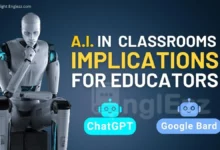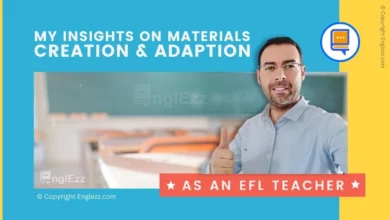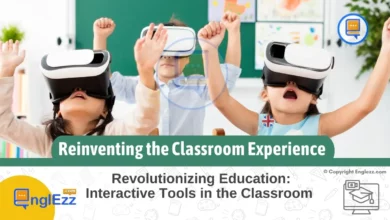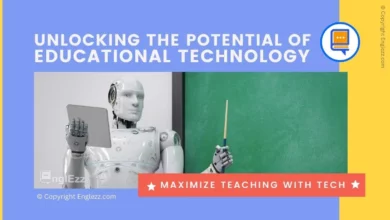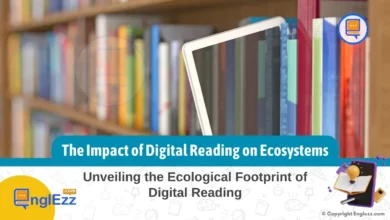In the landscape of education, where the quest for knowledge meets the realm of instructional practice, a dynamic force propels forward: educational innovation. This term encapsulates a multifaceted approach that educators and academic professionals leverage to transform traditional teaching paradigms into vibrant arenas of learning growth. Discover the top strategies to transform teaching practices and drive educational innovation in this comprehensive guide.
Educational innovation strides beyond mere adaptation; it embodies a proactive ethos that anticipates evolving needs and incorporates cutting-edge strategies to meet them. At the heart of this transformation lies a pivotal realization—the imperative for educators to embrace innovative practices as catalysts for enhancing learning outcomes in an ever-changing educational panorama.
Table of Contents
- Best Strategies To Transform Teaching Practices for Educational Innovation
- Understanding Educational Innovation
- Adopting innovative approaches
- Pedagogical Shifts Towards Innovation
- Integration of Technology in Teaching
- Data Privacy Concerns and Cybersecurity Risks
- Assessment Strategies for Innovative Teaching
- Future Directions in Educational Innovation
- Final Thoughts
- Final Tips
- Wrapping Up
- FAQs:
- Q1: How can I integrate technology effectively into my teaching practices?
- Q2: What are some alternative assessment methods for measuring student progress in an innovative classroom?
- Q3: Why is professional development crucial for educators in embracing innovation?
- Q4: How can institutions support teachers in implementing innovative teaching practices?
- Q5: What are key strategies for sustaining a culture of innovation within academic institutions?
Best Strategies To Transform Teaching Practices for Educational Innovation
Amid the tapestry of pedagogical discourse, the significance of weaving innovative strategies cannot be overstated. As educators navigate through diverse avenues seeking to impart knowledge effectively, integrating innovation becomes not just advantageous but essential. It heralds a new dawn in teaching methodologies, one marked by adaptability, creativity, and engagement—factors that stand as pillars elevating the edifice of education to unparalleled heights.
With unwavering commitment and a keen eye on emerging trends, educators embark on a journey towards enhancing student experiences by infusing their pedagogy with forward-looking approaches that resound with relevance and effectiveness in modern educational contexts. In this light, embarking on a nuanced exploration of educational innovation unveils pathways brimming with promise for those steadfast in their pursuit of enriching the learning landscape. Looking to enhance your teaching approach? Explore the best strategies for educational innovation and revolutionize your classroom.
Understanding Educational Innovation
Educational innovation encompasses the deliberate application of new ideas, methods, and approaches to transform traditional teaching practices, ultimately enhancing learning experiences for both educators and students. In modern educational settings, where dynamic challenges require adaptive solutions, incorporating innovative strategies becomes imperative.
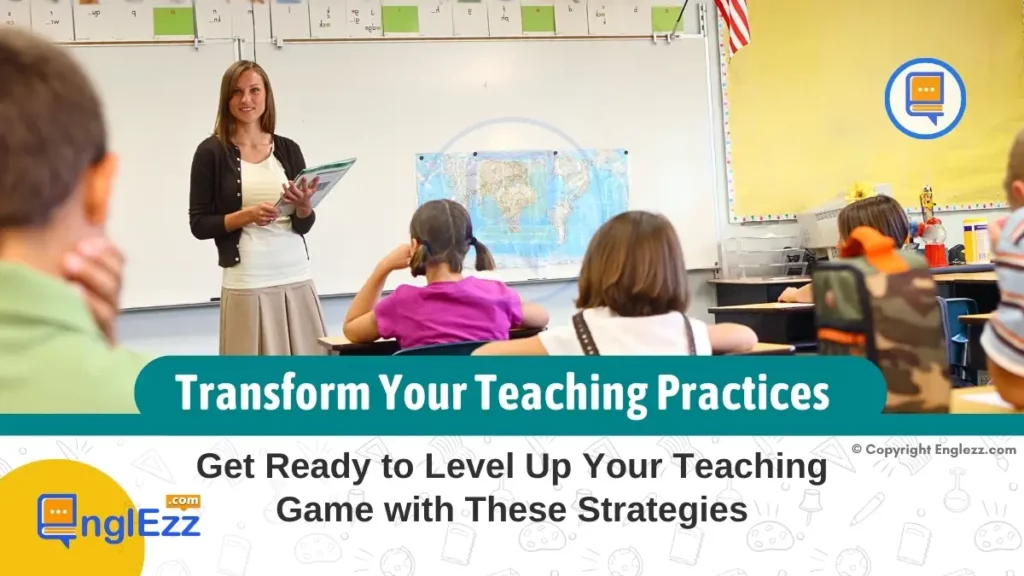
By reenvisioning instructional techniques, integrating cutting-edge technology, and fostering creative pedagogical approaches, educators can effectively engage learners in more meaningful ways. This shift from conventional methodologies to innovative practices not only improves academic outcomes but also cultivates critical thinking skills and adaptability essential for success in an ever-evolving society.
Technology plays a pivotal role in propelling educational innovation forward. From interactive online platforms to virtual reality simulations, the integration of technology into teaching practices offers unprecedented opportunities for personalized learning experiences. For instance, utilizing augmented reality applications in science classes allows students to visualize complex concepts like molecular structures with greater clarity.
Moreover, digital tools facilitate real-time collaboration among students regardless of their physical locations, promoting inclusivity and broadening educational horizons. Embracing technological advancements empowers educators to cater to diverse learning styles and adapt their teaching methods to suit the needs of 21st-century learners.
Adopting innovative approaches
Adopting innovative approaches benefits both educators and students by fostering a culture of continuous improvement and skill development. For teachers, embracing educational innovation opens avenues for professional growth through experimentation with novel teaching strategies that cater to varying student needs.
By engaging in reflective practices and seeking ongoing training opportunities, educators can refine their instructional methods and stay abreast of emerging trends in education. On the other hand, students exposed to innovative pedagogical techniques are more likely to demonstrate higher levels of engagement, motivation, and knowledge retention. For example, project-based learning initiatives encourage students to apply theoretical concepts in practical scenarios, promoting deeper understanding and long-term information retention.
In conclusion, understanding educational innovation involves recognizing the transformative power of progressive teaching practices driven by technology integration and creative pedagogical shifts. By embracing innovative approaches that prioritize student-centered learning environments supported by advanced technological tools, educators can cultivate a dynamic educational landscape conducive to holistic growth and academic excellence.
Efforts invested in honing innovative teaching strategies not only benefit current generations of students but also lay a strong foundation for future educational advancements tailored to meet the evolving needs of global learners.
Pedagogical Shifts Towards Innovation
In the realm of educational innovation, a fundamental shift from traditional teaching practices to more dynamic and student-centric approaches has been gaining momentum. Traditional methods often involve imparting knowledge through lectures and rote memorization, where students are primarily passive recipients of information.
Conversely, innovative pedagogical approaches prioritize active student engagement, critical thinking, and problem-solving skills. For instance, rather than relying solely on textbooks for information dissemination, educators are encouraging interactive discussions, project-based learning, and real-world applications to enhance student learning outcomes.
Student-centered Learning
Student-centered learning stands at the core of educational innovation, emphasizing the unique needs and abilities of each learner. By personalizing instruction and providing opportunities for self-directed exploration, educators can cultivate a deeper sense of ownership in students regarding their academic journey. This approach not only fosters independence but also nurtures creativity and intrinsic motivation among learners. For example, implementing inquiry-based projects where students pose questions, conduct research, and present findings empowers them to take an active role in constructing their knowledge.
Collaborative learning environments represent another pivotal aspect in promoting innovation within educational settings. By fostering collaboration among students through group activities, discussions, and peer-to-peer feedback mechanisms, educators create dynamic spaces where knowledge is co-constructed and shared. Such environments not only enhance social skills but also promote diverse perspectives and collective problem-solving capacities. An illustration of this could be seen in a science class where students collaborate on designing experiments or analyzing data collectively to deepen their understanding of scientific concepts while honing their teamwork abilities.
Integration of Technology in Teaching
In the realm of educational innovation, the integration of technology stands as a pivotal aspect reshaping traditional teaching practices. Various technological tools and resources have emerged to catalyze this transformation, offering educators diverse avenues to enhance student engagement and learning outcomes. For instance, virtual reality (VR) and augmented reality (AR) applications enable immersive learning experiences by simulating real-world scenarios, making complex topics more accessible and interactive for students. Additionally, adaptive learning platforms utilize artificial intelligence algorithms to personalize instruction based on individual student needs, fostering a tailored approach to education.
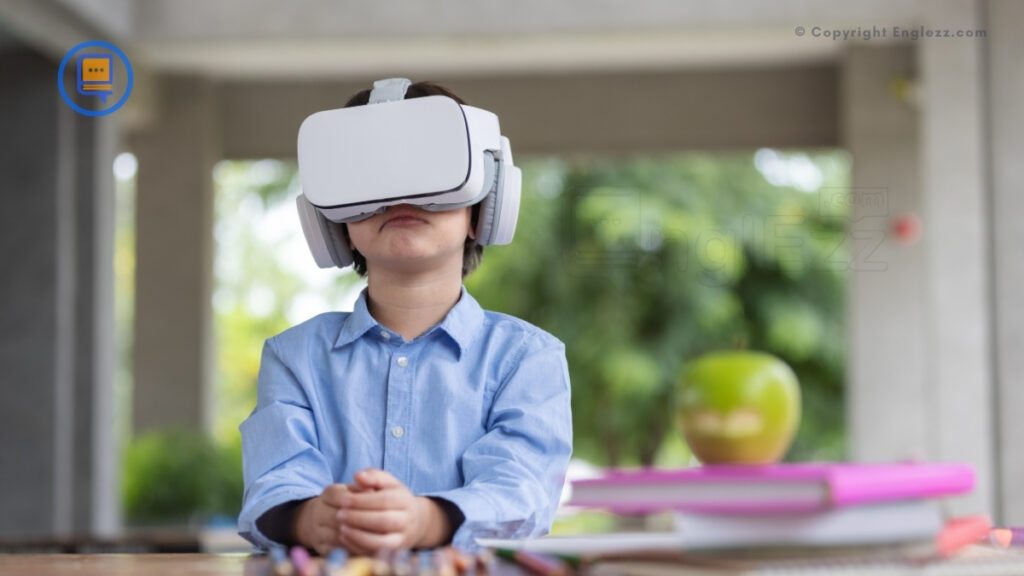
The advantages of integrating technology into classroom instruction are multifaceted. Technology not only supplements pedagogy by providing interactive multimedia resources but also cultivates essential 21st-century skills such as digital literacy, critical thinking, and collaboration. Through online collaboration tools like Google Workspace or Microsoft Teams, students can engage in collaborative projects regardless of physical proximity, promoting teamwork and communication skills essential for future workforce readiness. Moreover, technology enables educators to differentiate instruction effectively by catering to diverse learning styles and pace, creating inclusive learning environments that accommodate varying student needs.
Despite the evident benefits of digital integration in education, challenges persist in seamlessly incorporating technology into teaching practices. One prevalent challenge is ensuring equitable access to technology across all students, addressing the digital divide that might exacerbate existing disparities in educational opportunities. To overcome this barrier effectively, schools can implement initiatives like one-to-one device programs or provide internet connectivity support to underprivileged students.
Data Privacy Concerns and Cybersecurity Risks
Additionally, navigating data privacy concerns and cybersecurity risks presents another obstacle in leveraging technology for educational innovation. Educators must prioritize safeguarding sensitive student information while leveraging data-driven insights to improve instructional strategies without compromising student privacy. Adequate training and professional development opportunities are crucial for educators to navigate these challenges skillfully and harness the full potential of technology integration in education.
Professional development plays a crucial role in empowering educators to embrace innovation and enhance their teaching practices continuously. In the ever-evolving landscape of education, staying current with the latest trends, methodologies, and technologies is essential for teachers to optimize student learning outcomes. Institutions recognizing this need often provide various training programs and workshops designed to equip educators with the necessary skills and knowledge to implement innovative teaching strategies effectively.
For instance, schools may offer courses on utilizing virtual reality in the classroom, fostering creativity through project-based learning, or integrating social-emotional learning into curriculum planning. These professional development opportunities not only introduce teachers to cutting-edge approaches but also create a supportive environment for collaboration and idea-sharing among colleagues. By participating in such programs, educators can refine their teaching techniques, experiment with new methods, and adapt their instruction to meet the diverse needs of today’s learners.
Institutions can further support teachers’ professional growth by establishing mentorship programs where experienced educators guide their peers in navigating the challenges of implementing innovative practices. Mentorship fosters a culture of continuous improvement by providing personalized feedback, facilitating reflective discussions, and offering encouragement throughout the innovation process. Additionally, schools can allocate resources for educators to attend conferences, pursue advanced certifications, or engage in action research projects that contribute valuable insights to educational innovation at both local and global levels. Through ongoing mentorship and access to resources, teachers are better equipped to drive positive change within their classrooms and contribute meaningfully to educational innovation as a whole.
Assessment Strategies for Innovative Teaching
Innovative teaching practices call for a reevaluation of assessment strategies to align with the evolving educational landscape. Embracing alternative assessment methods that move beyond traditional tests and quizzes can provide a more holistic view of student learning. For instance, project-based assessments, where students demonstrate their understanding through creative projects or real-world applications, not only assess knowledge but also promote critical thinking and problem-solving skills. By incorporating diverse assessment approaches tailored to individual learning styles, educators can ensure a comprehensive evaluation of student mastery in innovative classroom settings.
Formative assessment techniques play a pivotal role in gauging student progress throughout the learning process in innovative teaching environments. These strategies involve continuous feedback loops that enable instructors to adjust instruction based on immediate insights into student understanding. For example, utilizing exit tickets or quick quizzes after a lesson allows teachers to identify gaps in comprehension quickly and intervene promptly to address areas needing reinforcement. Formative assessments foster a dynamic teaching-learning relationship by emphasizing ongoing dialogue between educators and learners, leading to enhanced academic growth and engagement.
Feedback mechanisms serve as essential components of the assessment process in promoting continuous improvement for both educators and students within innovative teaching paradigms. Constructive feedback provides valuable insights into areas of strength and areas needing development, guiding instructional adjustments for optimal learning outcomes. Through detailed feedback loops, educators can offer personalized guidance to students, fostering self-directed learning and reflective practices. In return, students benefit from actionable feedback that empowers them to take ownership of their learning journey while cultivating metacognitive skills crucial for long-term academic success in an innovative educational setting.
Effective assessment strategies in innovative teaching go hand-in-hand with creating a supportive environment where feedback is integrated seamlessly into the instructional framework. By embracing varied assessment methods tailored to individual learner needs, employing formative assessments for continuous progress monitoring, and establishing robust feedback mechanisms for constructive dialogue, educators can elevate their teaching practices and empower students to achieve their full potential through meaningful educational experiences characterized by innovation and growth
Future Directions in Educational Innovation
Looking ahead, the landscape of educational innovation is poised to witness several trends that will significantly influence teaching practices. One such trend is the increasing integration of artificial intelligence (AI) and machine learning in education. These technologies have the potential to personalize learning experiences, provide real-time feedback to students, and assist educators in designing tailored instructional approaches. By leveraging AI-driven tools, teachers can better address individual student needs and promote more effective learning outcomes. Additionally, virtual and augmented reality technologies are anticipated to revolutionize classroom settings by offering immersive learning experiences that enhance student engagement and comprehension.
Interdisciplinary approaches are gaining traction as a means to cultivate creativity and critical thinking skills among students. Encouraging collaboration between different subject areas can spark innovative thinking and problem-solving abilities. For instance, projects that combine elements of science, technology, engineering, arts, and mathematics (STEAM) can nurture holistic development and encourage cross-disciplinary connections. By embracing interdisciplinary strategies, educators can empower students to approach challenges from diverse perspectives and develop well-rounded skill sets essential for success in an evolving workforce.
To sustain a culture of innovation within academic institutions, it is crucial to foster a supportive environment that values experimentation and continuous improvement. Establishing platforms for sharing best practices, encouraging faculty collaboration across departments, and providing resources for exploring new teaching methodologies are essential components for promoting innovation in education. Institutions should also prioritize professional development opportunities that equip educators with the skills needed to adapt to changing educational landscapes effectively. By investing in ongoing training programs focused on innovative pedagogies and emerging technologies, academic institutions can cultivate a dynamic culture of learning that prioritizes exploration and growth.
Final Thoughts
In brief, the landscape of educational innovation is evolving rapidly, offering educators a myriad of opportunities to enhance teaching practices and elevate student learning experiences. As we navigate future directions in educational innovation, it becomes evident that embracing change and adopting progressive strategies are crucial for fostering a culture of continuous improvement within academic institutions.
By incorporating interdisciplinary approaches that stimulate creativity and critical thinking, educators can cultivate dynamic learning environments that empower students to thrive in an ever-changing world. The commitment to ongoing professional development, coupled with the integration of technology and innovative pedagogical methods, paves the way for transformative teaching practices that not only engage students effectively but also equip them with the skills necessary for success in the 21st century.
Looking ahead, it is essential for educators to stay attuned to emerging trends in educational innovation, such as personalized learning pathways and inclusive teaching practices, to tailor their approaches according to the diverse needs of learners. By nurturing a supportive ecosystem that values experimentation and collaboration, academic institutions can sustain a culture of innovation that transcends traditional boundaries and encourages continuous growth for both educators and students alike. As we forge ahead into uncharted territories of educational advancement, the key lies in harnessing the power of innovation to revolutionize teaching methodologies and shape a brighter future for education globally.
In this journey towards educational excellence through innovation, remember that every small step taken towards implementing novel strategies contributes significantly to the broader transformation of educational practices. By prioritizing student-centered learning, leveraging technological tools effectively, engaging in ongoing professional development activities, and embracing alternative assessment methods tailored for innovative classrooms, educators can truly level up their teaching game and make a lasting impact on the lives of their students.
Let us continue to explore new horizons in education with an unwavering spirit of curiosity and dedication towards creating meaningful learning experiences that inspire growth and prosperity for generations to come.
Final Tips
As educators strive to transform their teaching practices through educational innovation, here are three essential tips to enhance their strategies and level up their teaching game. Firstly, fostering a culture of experimentation and reflection can significantly drive innovative practices in the classroom. Encouraging teachers to try new methods, technologies, or approaches allows for continuous improvement based on insightful reflections on what works best for student engagement and learning outcomes. For instance, organizing regular teacher-led workshops where faculty share their innovative practices can inspire others to take creative risks in their teaching.
Secondly, collaboration among educators within a school community or across institutions can be a powerful catalyst for educational innovation. Building professional learning communities that focus on sharing best practices, discussing challenges, and co-creating new teaching methodologies can elevate the collective expertise of all educators involved. By collaborating on projects or conducting peer observations, teachers can learn from each other’s diverse experiences and perspectives to develop more effective innovative strategies tailored to different contexts.
Lastly, embracing a growth mindset is crucial for educators looking to innovate in their teaching practices. This involves being open to feedback, seeking opportunities for self-improvement, and continuously adapting to meet the evolving needs of students in today’s fast-paced educational landscape. By cultivating resilience in the face of setbacks and viewing challenges as opportunities for growth rather than obstacles, teachers can sustain their motivation to experiment with new approaches and remain dedicated to transformative teaching practices over time.
Wrapping Up
In this exploration of educational innovation, it becomes evident that embracing new strategies in teaching practices is essential for educators to facilitate enhanced learning experiences. Educational innovation encompasses a spectrum of approaches from integrating technology to fostering collaborative learning environments, all geared towards promoting student-centered and effective pedagogical methods. By understanding the significance of ongoing professional development, rethinking assessment strategies, and envisioning the future trajectory of education, educators can truly level up their teaching game and prepare students for the dynamic demands of the modern world.
Through this article, we have delved into the transformative potential of educational innovation and provided insights into how educators can adapt their practices to meet the evolving needs of learners. As schools and academic institutions continue to evolve, a commitment to innovative teaching methodologies will serve as the foundation for creating engaging and impactful learning environments. By adapting to changing trends, incorporating technological advancements judiciously, and nurturing a culture that values creative exploration and critical thinking, educators can play a pivotal role in shaping the future of education.
FAQs:
Q1: How can I integrate technology effectively into my teaching practices?
A1: To integrate technology effectively, start by identifying tools that align with your instructional goals. Provide training opportunities for both yourself and students to ensure seamless integration.
Q2: What are some alternative assessment methods for measuring student progress in an innovative classroom?
A2: Alternative assessment methods such as project-based assessments, e-portfolios, peer evaluations, and self-assessments offer diverse ways to gauge student understanding beyond traditional exams.
Q3: Why is professional development crucial for educators in embracing innovation?
A3: Professional development ensures educators stay updated on best practices, technological advances, and innovative pedagogies while fostering a growth mindset necessary for adapting to change.
Q4: How can institutions support teachers in implementing innovative teaching practices?
A4: Institutions can provide mentorship programs, resources for professional growth opportunities like workshops or conferences, time for collaboration among faculty members to encourage sharing of best practices.
Q5: What are key strategies for sustaining a culture of innovation within academic institutions?
A5: Creating spaces for interdisciplinary collaboration, encouraging experimentation with pedagogical approaches, fostering an environment that values continuous improvement through feedback mechanisms are vital strategies toward sustaining an innovative culture in academic settings.



